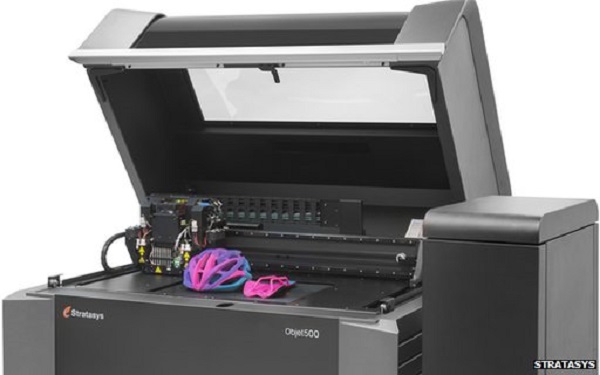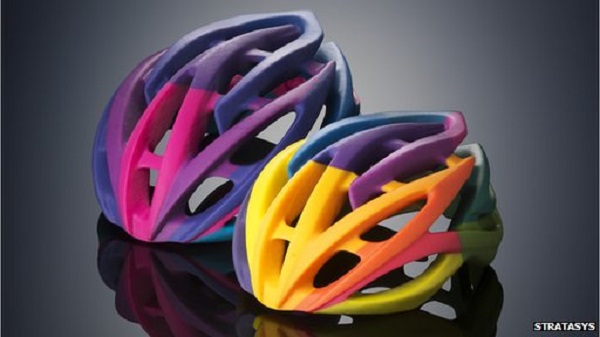Makerbot’s owner has just made 3D printing a lot more interesting, as its latest product not only prints in color, but also uses different materials of different textures, thus making separate print runs and painting completely unnecessary.
3D printing has come a long way since it became mainstream a couple of years ago. Since initially the only materials that could be used were threads of polymers, someone must have gotten really frustrated at some point and decided to diversify things just a little bit. Nowadays, bio-printing and even 3D printing using liquid metals is possible, not to mention that there’s the possibility of adding a touch of color to the 3D printed creations. Stratasys, a company that became really popular after buying MakerBot last year, as well as Israeli multi-material specialist Objet back in April 2012, has launched Objet500 Connex3 Color Mutli-material 3D Printer, a triple-jetting device that’s meant to save manufacturers and designers a lot of time. As Stratasys marketing manager Bruce Bradshaw stated in an interview with the BBC, “This will help industrial designers reduce the time it takes to bring prototypes to market by 50%.”

When it comes to the colors produced by this 3D printer, the Objet500 Connex3 isn’t much different from its inkjet counterparts. Even though only 3 colors are used by the device, respectively cyan, magenta and yellow, the combinations between these are countless. In terms of materials, Objet500 Connex3 works with rubber and plastic, and can mix them in different proportions, thus creating products of various flexibility and rigidity, transparency and opacity.

Convenience rarely comes cheap, so if you are a designer or a manufacturer who thinks that the Objet500 Connex3 Color Mutli-material 3D Printer could help your business, prepare to shell out $330,000.
Duncan Wood, publisher of specialist 3D printing magazine TCT, admitted that “This is groundbreaking stuff. Being able to produce single products incorporating materials of different rigidity and color has been the holy grail of 3D printing to date. This is industrial-grade technology that will afford designers a level of creativity they’ve never had before.”
There’s no denying that, but is the world ready for such expensive high-end 3D printers? The technology is still relatively new, so all that R&D needs to be paid out somehow, but the price still feels incredibly steep.
If you liked this post, please check 3D printing with liquid metals and the 3D printed organs that will be made by Organovo in 2014.










